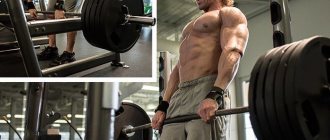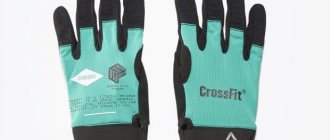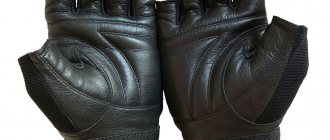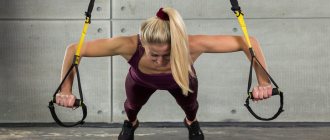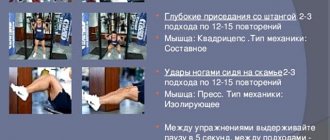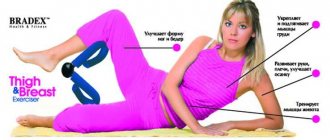Pull-ups on a horizontal bar are one of the best and most effective exercises for pumping up the latissimus dorsi muscles, wings. On the day of back training, many people don’t like to do pull-ups and are looking for a replacement. Today in our article, we will tell you about similar exercises that can replace pull-ups on a horizontal bar. , in terms of effectiveness, they are a level lower than pull-ups, since such muscle stress is not created, after which the muscles hurt, many exercises differ in the range of motion, and for a number of other reasons, the back muscles do not react to the load!
1) Vertical pull of the block from above
The first exercise, which is similar to pull-ups, if you work out in a gym or fitness club, is a seated vertical row, this exercise can be performed in 2 options, with a classic grip, option 2 behind the head with a wide grip, technically both exercises are performed almost identically, in the first When you pull the lever of the machine to your chest, you need to tilt your back a little and push your chest forward; each time you pull, try to touch the lever to your chest, then return to the starting position.
When you pull the head with a wide grip, you should, on the contrary, sit down like this, and tilt the back of your head and back a little forward so that it is comfortable for you to pull the lever of the machine, and touch the back of your head, after touching, you must return to the starting position, in these two arm exercises in the initial phase of the movement, it is not necessary to straighten so that the back muscles are constantly under load; when you fully straighten your arms, in the initial phase of the movement, the load goes on the muscles of the arms, mainly on the forearms and biceps, and only then on the wings, latissimus dorsi, etc. you can make it more difficult, there is one option, delay for 3 - 4 seconds, and then return to the starting position.
phases for a gradual transition to pull-ups
No: isometric hold
Goal: Keep your chin over the bar for 60 seconds.
Grasp the bar with an underhand grip. Stand on the bench so that your chin is at or above the bar. Squeeze your shoulder blades together, tighten your core, and then lift your legs off the bench, keeping your chin over the bar as long as possible. Rest between sets for 2 minutes. Repeat, trying to hold longer than in the previous approach.
When you can keep your chin over the bar for 60 seconds, move on to phase two.
No.: negative pull-ups
Goal: complete 3 sets of 15 seconds
Using a bench, stand so that your chin is at or above the bar. With your arms bent, grab the bar with an underhand grip. Lift your legs off the bench and lower your body down, extending your arms as slowly as possible. Try to lower yourself within 15 seconds. After completing the repetition, rest for 1 minute. Perform 3 reps for 3 sets. Rest 2 minutes between sets.
When you can do 3 sets, move on to phase 3.
No.: pull-ups with expander
Goal: Perform 3 sets of 8 reps with minimal resistance band support.
Supported by two legs
Place the expander behind the bar. Grab the bar with an underhand grip and place your crossed legs or knees on the resistance band. Perform 8 pull-ups (or as many as you can), slowly lowering yourself over 15 seconds. This is one approach. Do 3 sets, resting 2 minutes in between.
With one leg support
Once you can complete the prescribed number of sets and reps, do the same exercise, but with one leg (or knee) resting on the resistance band. You can keep your free leg straight or bend the knee. Perform 8 pull-ups (or as many as you can), slowly lowering yourself over 15 seconds. This is one approach. Do 3 sets, resting 2 minutes in between.
No: pull-ups with a partner
Goal: perform pull-ups without the help of an expander
Grasp the bar with an underhand grip. Do as many pull-ups as you can. Your partner should push you at the hips as you pull yourself up to the bar, but you should always lower yourself without his help. As soon as you feel tired, rest for 2 minutes and do 3 more of the same approaches.
No.: pull-ups
Goal: Perform pull-ups without assistance
Grab the bar with an underhand grip and do as many pull-ups as you can. Gradually, as you progress, move from an underhand grip to an overhand grip.
https://greatist.com/move/upper-body-moves-cant-do-pull-up
2) Horizontal row while sitting in the simulator
And so they talked about the 2 simplest options, option 3, how and what you can replace pull-ups on a horizontal bar with a crossbar - this is to perform horizontal rows while sitting in a machine, where in the process of doing this you can immediately stretch your back very well, there are 2 types of execution, the first is in one fixed position, where everything is simple and easy, sit down on the machine, and take the handles of the machine, you need to pull them to the belt, until you touch the stomach, then return to the starting position, when you sit in one position, when pulling, the main muscle group that trains - these are the latissimus muscles, longitudinal, rhomboids, the lumbar muscles receive a strong static load, due to maintaining a straight back, this is very important, throughout the entire approach, and not bending, so as not to break.
For those with a weak back, it is recommended to do this in a fixed position. Option 2 is suitable for more trained athletes whose back is already more or less strong, since each repetition means stretching the back and tilting it forward, after pulling to the stomach, this way the muscles receive additional stress and are better pumped, but it is dangerous because You can break your back, so the choice is yours! This is one of Arnold Schwarzenegger's favorite exercises, everyone should take note.
Common mistakes
Although the exercise is one of the basic ones and is suitable for beginners, many people make mistakes when performing it. The following points make traction ineffective and prevent you from achieving the desired result:
- hunched shoulders, curved spine;
- lifting the buttocks off the bench while raising the arms;
- redistribution of the main load from the back to the biceps;
- choosing too much weight that does not allow you to do the movement correctly.
You should not completely relax during this phase of the movement. Of course, it is recommended to stretch the muscles after contracting. And it gives its results. But in this case, such a “relaxed” stretch can be traumatic, especially when working with significant weights. Therefore, we fully extend our arms, but keep our muscles in good shape.
3) Bent-over barbell row
Let's look at the 4th option for replacing pull-ups on the horizontal bar, this is the bent-over row of a barbell to the belt, the row is considered not an easy exercise that is performed mainly by men, both at home and in the gym, and rarely by women, so to speak, this is a masculine movement, in terms of effectiveness if it compared with pull-ups on a horizontal bar, it is definitely inferior, firstly, when performed with a barbell, with free weight, the amplitude of movement here is shortened, if you look from the side, it resembles a horizontal row while sitting, only in a standing position, with a barbell, during the execution process the majority fitness bodybuilding athletes make mistakes, they do jerks with their backs, that is, they cheat, they help with other muscle groups, accordingly, the main emphasis of the load goes to other muscle groups, in this case it is not very effective when cheating is present.
Muscles that work when doing pull-ups on a horizontal bar
Pull-ups are a movement that targets most muscle groups in the upper torso.
The following work in dynamic mode:
- lats
- biceps
- dorsum of trapezius
- rear delta
The forearms, abs and lower back act as stabilizers of the body position. And even the chest and shoulders experience indirect static load.
In bodybuilding, various variations of pull-ups are considered a basic exercise for working the lats and biceps.
There is a strong belief among bodybuilders that overhead or wide-grip pull-ups are the best exercises for the outer lats. Although this opinion has not been confirmed by science, it has not been refuted either.
In fact, this is a general developmental movement for developing muscles and strength indicators of the entire upper body.
4) One-arm dumbbell row with emphasis on a bench
Let's look at option 5 of replacing pull-ups on the bar, and you can replace them with a dumbbell row with one hand to the belt on a bench, where the load on the lumbar muscles is eliminated due to the support of the legs and arms on the bench, that is, it, like the vertical row in front of you, is head, do not carry a large load on the lumbar muscles, and are considered safe. If you have back pain, you should pay attention to these exercise options, the barbell is not for you, like other options where there is a static load on the back, and also where it should tilt your back and arch.
Dumbbell row with one hand, technique of performing, leaning your elbow on the bench with your arm and leg, and taking the dumbbell in your hand, keeping your back straight, pull the dumbbell to the hip joint, then return to the starting position. It is important that when you pull the dumbbell to your waist, you should try not to raise your shoulder up; many people make this mistake.
Exercises for secondary muscles working during pull-ups
To work out the biceps, lifting barbells (dumbbells) for biceps in different variations is suitable. In this case, the grip can be either direct, for a better load on the biceps, or reverse, where the forearm and brachioradialis muscles work more.
For the forearms, a little-known exercise for strengthening grip strength is best - holding a barbell or dumbbells with your hands down.
You need to slowly squeeze and unclench your palm, rolling the weight over your fingers.
- For trapezius – Standing barbell/dumbbell shrugs
- For the lower back – Boat
- For the Abs – Crunches lying on the floor, Reverse crunches or any movement that involves lifting the torso or legs
- For the rear deltoid - Incline dumbbell raises
5) Straight arm row in crossover
The next option for replacing pull-ups in the gym, this exercise looks simple from the outside, and in fact it is not too complicated, the exercise is called straight-arm crossover rows, from the upper block, where the latissimus dorsi muscles, the wings, receive sufficient load for muscle growth , as it were, but call it basic, due to the fact that the quality of muscle development is not too high, this exercise is best used as an additional exercise, after completing the basic one, as a finishing exercise, isolated, nothing more. The arm muscles are not trained here by constantly holding them in a straight position, another disadvantage of the exercise
Execution technique: standing, holding the straight metal bar of the exercise machine, you need to do rows to the belt with straight arms, then release the load at a slow pace, positioning your legs, one leg in front, the other in back, the front one serves as a support, as if you grabbed a metal bar with your hands, you need to do 2 step back and tilt your back a little, example in the photo, the slower you lower the load, the better you will feel the latissimus dorsi muscles.
This concludes our review, now you know how you can replace pull-ups on the horizontal bar in the gym, at home, with other types of exercises, which, as the practical experience of professionals shows, are not inferior, but this does not mean that pull-ups should not be included in your training program!
Choosing the right size
In order not to make a mistake with the length of the strap, you need to take into account not only the circumference of the hand at the wrist. The size of the metal bar is also taken into account. According to standards, the diameter of the steel rod of the horizontal bar must be 28 mm. But when constructing crossbars, especially street ones, no one adheres to these requirements.
| Wrist circumference, cm | Strap size (mm) for bar diameter 26-28mm | Strap size (mm) for bar diameter 28-30mm | Strap size (mm) for bar diameter 30-32mm |
| 15 | 63–64 | 65 | 66–67 |
| 15,5 | 64–65 | 66 | 67–68 |
| 16 | 65–66 | 67 | 68–69 |
| 17 | 67–68 | 69 | 70–71 |
| 18 | 68–69 | 70 | 71–72 |
| 19 | 69–70 | 71 | 72–73 |
| 20 | 70–71 | 72 | 73–74 |
| 21 | 71–72 | 73 | 74–75 |
When making pull-up straps, you need to take into account the amount of tape for overlap. To sew the overlay well, make an allowance of a few centimeters. Typically its size is approximately 4–6 cm.
The straps for the horizontal bar may vary in size. The material for the straps must be purchased with a reserve.


